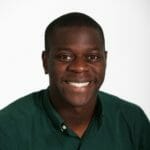Product Management Skills
FEB 26, 2021
5 Tips for Product Managers: Members Content Sneak Preview
Read next

#mtpcon
Learnings from London: Mastering the art of the big bet by Alice Newton Rex

Eira Hayward
- 1 min read

#mtpcon
SUNDAY REWIND: From opinion-based to evidence-guided product development by Itamar Gilad

Eira Hayward
- 1 min read




Comments
Join the community
Sign up for free to share your thoughts